Media | Articles
Coulda Had a V-12: Here Are 10 of the Most Memorable
Thanks to recent news from Aston Martin and Ferrari, the V-12 engine layout thankfully remains in production and continues to find a home in new vehicles. It’s great news, and easily put into words. Less easily described, though, is the sound of a V-12 engine—you truly need to hear one to appreciate their symphony.
Those sonorous notes, along with the silky smooth power delivery that comes with them have graced the automotive landscape for decades. In celebration of the V-12’s continued presence, we took a look back into the V-12 engine’s storied history across multiple brands to pick some of our favorites.
Packard Twelve

The Packard Twelve started life as the Packard “Twin Six,” but the second generation of Packard V-12 (1933-39) and was known for a body design worthy of a V-12 engine. Packard’s iconic grille was paired with some of the most famous coachbuilders of the era, including LeBaron and Dietrich. The Packard Twelve was indeed the flagship of Packard line, with the Super Eight, Eight, and “Junior” models like the One-Twenty, Six, and One-Ten slotting below. They were fine models with perfectly acceptable engines, but the Twelve was the one that stood out.
2008 Audi Q7 V-12 TDI

You weren’t ready for this one, were you? But it’s true, as the Volkswagen Group made a V-12 engine for the flagship Q7 utility vehicle. This was before Dieselgate came to fruition, so this turbocharged, direct injected, V-12 diesel had the potential for success.
Audi’s oil burning V-12 was used on this single vehicle from 2008-12, sporting 493 horsepower and a whopping 738 lb-ft of turbodiesel torque. While this particular Q7 never made it to the U.S., it would absolutely be one of the most amazing diesel vehicles in America, when they are legal to import in 2033, that is.
Marketplace
Buy and sell classics with confidence
Jaguar V-12

While an inline-six rests beneath the bonnet of many iconic Jaguars, it was only natural for larger, later model Jags to utilize the relaxed cadence of its V-12 motor in 5.3- or 6.0-liter displacements. Luxury cars were getting bigger and bolder, and doubling the cylinder count certainly helped with that transition.
Jag even developed a 7.0-liter example used in motorsport, but Jaguar’s V-12 was primarily notable as a top-tier luxury car powerplant during the Malaise Era, thanks to the addition of fuel injection and a High Efficiency (HE) combustion design in 1981. This smooth, relaxed engine was the perfect dance partner to a cabin fitted with decadent leather and burl wood, and its demise in 1997 was the end of an era for British motoring.
Lincoln-Zephyr V-12

Like so many other components found in Lincoln vehicles, the flathead V-12 found in 1932 model Lincolns and Zephyrs was heavily based on parent company Ford’s flathead V-8. The motor wasn’t without its flaws however, mostly present in its PCV, oiling and cooling systems. Those issues were addressed over time, however, and Lincoln’s V-12 ultimately became part of the brand’s success: Take something from Ford, modify the heck out of it, and turn it into something worthy of a luxury vehicle.
Ferrari Colombo V-12

Named after its creator, Gioacchino Colombo, this Ferrari V-12 powered some of the most famous, desirable and valuable vehicles to wear Ferrari’s prancing horse emblem. The sheer volume of changes this motor underwent over the course of its 41-year production run is impossible to cover for this list.
No matter, though: Every iteration of this all-aluminum masterpiece delivered the feel and sound of exotic performance befitting a Ferrari, from its placement in the original 1947 Ferrari 125 S, to icons like the 1962 Ferrari 250 GTO, and delightful touring cars like the final Ferrari 412i from 1988.
BMW M70

While BMW’s flagship V-12 came in four variations over the course of several decades. Perhaps the most appealing example is the M70 design that powered the E32-generation 7-series and E31 8-series. Be it a BMW 750i or 750iL, you were guaranteed one of the best performing luxury sedans on the planet. And the 850i, 850Ci, and 850CSi were grand touring coupes of the highest order, especially when optioned with a six-speed manual transmission.
But the real reason why the M70 V-12 from BMW was so special is its legacy with the McLaren F1. Its stunning 618 horsepower helped propel the F1 to an insane top speed of 240.1 mph in 1998, thanks to four-valves per cylinder, variable valve timing, and a surprising lack of forced induction. Ah, if only modern hypercars could take a page from BMW’s M70 masterpiece and ditch the turbochargers!
Cadillac V-12

Here’s an awkward twist to the overall theme of this story: While most auto manufacturers had a V-12 as their flagship, top-of-the-line, first class powerplant, this doesn’t apply to Cadillac. Their V-12 was actually one of their V-16 engines with four cylinders lopped off.
The V-12 Caddy was made from 1930-37, and “only” made 135 horsepower relative to the V-16’s rating of 165. While both were premium offerings with features like overhead valves and hidden wiring/plumbing, this V-12 rightly plays second fiddle to the Cadillac V-16.
Toyota GZ

While Japan is better known for engines with fewer pistons, the Toyota Century and its V-12 engine are the crown jewels for an entire nation. Toyota had premium-car intentions for decades, but no other brand in Japan had the nerve to equip a vehicle with a V-12 engine. Toyota did just that for their flagship Century luxury sedan in 1997. In doing so, the V-12 (codenamed 1GZ-FE) soldiered on for another 20 years, ensuring Toyota’s place in luxury car history.
Lamborghini V-12

Ferrari was slow to full embrace dual overhead camshafts for their V-12, but Lamborghini (as was their wont) chose a different path, going all in on the four-camshaft phenomenon with the V-12 in their first car, the 350 GT. The same engine family powered Lambos for decades, including the Miura and Countach, and ending its reign with the 2010 Murciélago. While modern Lambos under the watchful eye of Audi are clearly better performers with modern V-12 engines, their improvements only serve to enhance the original’s mystique. And perhaps it proves that all supercars need twelve cylinder engines, otherwise perhaps they aren’t actually that super at all?
Mercedes M275

While there are four generations of Mercedes-Benz V-12 opulence, the M275 was both twin turbocharged and impressive enough to remain in production for the latest Pagani hypercars. That’s right, even the new Pagani Utopia uses an M275 (technically an M158 derivation) to achieve forward thrust with 754 horsepower, with a manual transmission to boot.
But the M275 V-12’s zenith doesn’t necessarily point solely to the crème de la crème Pagani—there were too many fantastic automobiles that utilized this engine. The list includes Maybach luxury sedans, S/SL/CL “600” class luxury cars and their AMG tuned “65” series counterparts, the radical SL65 AMG Black Series, and even the outlandish Maybach Excelero sports car. Their torque output was legendary and impossible to match, and it’s one of the few engines that can provide EV-like thrust at low speeds with Lamborghini-like top end acceleration.
Perhaps we saved the best for last, as this motor could be considered a gold standard for which all modern luxury cars are judged by. Mercedes has made a replacement for this motor (M279), but it doesn’t do anything to tarnish the twin turbo M275’s performance potential. We can thank Pagani for that, or perhaps we should credit Mercedes for keeping the V-12’s flame alive in more ways than any other automaker possibly could.
***
Check out the Hagerty Media homepage so you don’t miss a single story, or better yet, bookmark it. To get our best stories delivered right to your inbox, subscribe to our newsletters.

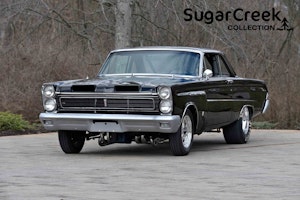


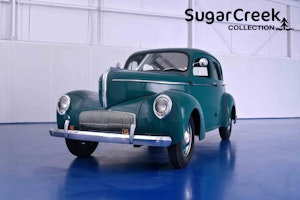
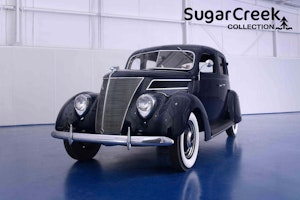
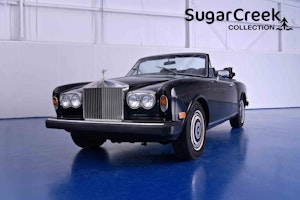
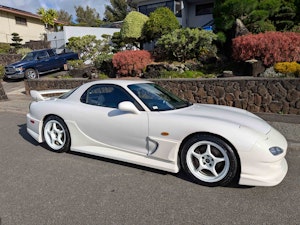














Jaguar V12 in the same story as live forever? Should we not say will be remembered forever. No 12 Jag lives long once the valve seats drop.
A valid point, hyper!
Is there no way to prevent that?
Yes it is called the LS1 conversion.
Or as my buddies father did he installed a 428 Pontiac in his 1976 XJ 12 sedan after the FI computer began to fail and the other head the valve seat dropped in it.
For less than the cost of repairing both heads a reliable engine has more power and more durability. 30 years later the 428 still sings along.
Note the car was already set up with a Turbo 400 and a GM AC system so it makes conversions easy.
There must be, since that engine was certified as an aircraft powerplant back in the ’80s. There are a few such Jag conversions still flying, mostly in England.
Dropping a valve seat is not that common an issue on the Jaguar engine. When it does happen it’s usually because the engine was overheated.
The valve seats usually drop after a lack of maintenance and internal coolant leaks have resulted in corrosion that “welds” the cylinder heads to the head studs, making head removal an excruciating task that requires an expensive special tool and a lot of luck.
Anybody ever recall (maybe late ’60’s???) Jag played around with a straight 12? My recollection is reading about the effort in a Popular Mechanics or similar magazine. My recollection was the attempt was to somehow mate up two of their six cylinders but the whip of the crank could not be resolved. I think I recall an E Type with a hood 4 miles long to accommodate the concoction. I never seem to find any info but I don’t know why I would have dreamed up such a story.
Packard built such a one-off in 1929: https://www.macsmotorcitygarage.com/packards-1929-straight-12-experiment/
Voisin put several into production, essentially two existing sixes end-to-end; the rear cylinders intruded into the cabin.
An article about the Jaguar “Straight-12” engine appeared in an issue of Road&Track in the late-60’s. It powered a model called, Jaguar XK-EE. The article was an “April Fools” joke, but a stretched E-type powered by with this “Twin-XK” engine actually existed. It was constructed in California by a fabricator whose first name was Ali. I can’t recall his surname. The article was in an April issue between 1967 and 1970.
I was told by my British Car Mechanic, who I pay to keep my 3 MG’s and Triumph running, even if someone offers to give you a V12 Jag – RUN!
A Jag V12, maintained and not ignored will run forever.
I can’t believe you forgot to mention the Bentley/Audi W12. Admittedly not a V12, it is still a 12, and it has all the attributes of a 12.
I can believe it…I mean it’s not a V-12. 😉
This is were we can get weirdly pedantic. Are two VR6s stuck together a V12? Its only got two cylinder heads, so maybe? But also maybe not. While we’re at it, what about the flat 12 in the Testarossa? What is a flat 12 but a 180 degree V12?
Only a V12 is a V12. A flat-12 is no more a V12 than a flat-6 is a V6. There has to be a line somewhere, and the logical place to draw it seems to be an actual V configuration.
Agreed, it is a V12 or it not so. Live with the true facts.
As I understand it, a “V 12”, no matter the degree of the “V” (even 180 degrees), has 6 journals, whereas a boxer (flat) engine has a journal for each cylinder. The flat 12 in the Porsche 917 is a 180 degree V 12 where as the 911’s have flat (boxer) 6s. Good reference: https://www.enginelabs.com/news/title-fight-boxer-versus-flat-engines-whats-the-difference/
I have heard this crazy argument before and it’s just silly. It’s either a V configuration or it’s not. And a horizontally opposed engine is not a V. I do understand that a horizontally opposed engine may or may not be a boxer.
Some flat 12s are 180° V12s. Actually, can’t think of one that is actually a boxer (in spite of the Ferrari name, it was a 180° V12).
https://engineerine.com/flat-engine-is-not-boxer-heres/
VW also used the W12.
Rolls Royce Merlin? Packard produced a lot of them here under licence. They did turn the P-51 from a good fighter to a great fighter when they replaced the original Allison. A Mustang engine in a Mustang ? Probably a little too tight a fit.
Since this was about cars engines, just saying. Even an Allison found its way into a car or to but not factory.
The V-12 Merlin is the fastest piston engine in the sky and has proven it quite a few times. The only real competition it ever gets is from the R-3350s and occasionally an R-4360. Hearing a Merlin running all-out at the National Air Races in Reno was a life-altering experience…….as the saying goes, if you don’t understand it, I could never explain it to you. Even the sound of a stock Merlin in a regular Mustang, Spitfire, et al is…..well, just spectacular. They sound like a tractor on startup and have that popcorn backfire at flight idle, but that’s just part of the charm. Car, boat, airplane I just like the sound of a good-running engine.
Speaking of sound and “Big-V” engines, I owned a V-10 powered Dodge dually for about a dozen years. Loved the rumble that big girl made. The V-10 in the Viper, on the other hand, sounded awful. Maybe it was having only five cylinders per sidepipe exhausting just two to three feet or so below and behind my ear, but it never sounded right, or good.
And I didn’t even mention Detroit Diesels………
Well, if we’re adding aviation engines to the mix, throw in the Liberty, Allison, Jumo, a few other Rolls engines, and whatever the USSR was up to at the time.
You might not be able to put a Merlin in a car, but it’s close relative graced the Rolls-Royce Phantom III- the first V12 ever in a R-R, and the last until the Silver Seraph. It was also supposedly the last engine actually worked on by Royce.
The 447-ci ohv 1936-39 Phantom III V-12, 727 produced, were indeed the last of Derby’s products a then ailing Sir Henry Royce had a hand in, but they were no design relation to the Merlin beyond being a veed 12.
Other than this overly complex, troublesome Phantom III engine, Rolls-Royce/Bentley products became more rationalized from 1935-on, when R-R’s mainstay became aero engines as it did to this day. 1935 was give or take a year of Cad/LaSalle’s Oldsmobile-based junior edition, Packard’s 120, Lincoln’s Zephyr, even the ’36 Cord called the “baby Duesenberg” by A-C-D employees and intended as such. Engineering improvements made enormous automobiles seem old hat, comic opera in more egalitarian times. The new junior, downsized fare was also more driveable.
Oh, you can put a Merlin in a car. I’ve seen reports of several (usually into Rolls autos). The first article is saw was in one of the magazines to which my father subscribed (probably Popular Mechanics). The guy who did the engine swap reported that his fuel consumption with the Merlin was the same as that of the V-8 it replaced.
On a technicality – Car was implied but never specifically said. There were the Bluebird and Thunderbolt land speed record machines, both powered by Rolls R type aircraft V-12s. I don’t mind blurring the lines sometimes.
The “Miss Budweiser” hydroplane of the ’60s used a war surplus Allison V-12. I saw it run on Fort Loudoun lake in Tennessee when I was in high school. It ran up the lake nearly to the Henley bridge in Knoxville, turned around, and started its run back towards the dam. The “rooster tail” got about twice the height of the boat when there was a “whump” and the sound stopped.
It had hit a submerged log. My father told me that it tore out the bottom of the hull. As far as I know, the engine is still buried in the mud of the river bottom.
You should mention the V12s found in the Auburns and Pierce Arrows of the 1930s. They morphed into the larger engines found in the American LaFrance and Seagrave fire engines…
Good catch, Monsignor Bulpitt. The Packard Twelve was never intended as the Company’s top-line, to replace their big 385-ci Custom/Deluxe inline eight, only a 376-ci FWD contender for Buick’s 345-ci Model 80/90 straight eight. FWD was all the rage then, with Ruxton, Cord’s L-29, Miller straight 8s at Indy, and is cheaper to produce than rear wheel drive.
But when Cadillac introduced their V-16, essentially a straight 8 with the firing impulses halved for less crankpin loading, because a bigger V-8 would’ve meant vibration, balance, thermodynamic problems and been unable to use the existing transmission, Packard hurriedly stroked their FWD intended V-12 and dropped it into the Custom 8 chassis.
Packard’s penchant for over-engineering meant their four-main-bearing V-12 still an excellent engine, but it used under license Cadillac’s fiendishly complicated hydraulic valve s i l e n c e r s, while Pierce-Arrow’s seven-main-bearing V-12 was designed from the outset as power for massive luxe barouches, from 1933-on with Pierce’s innovation, hydraulic valve lifters.
Packard’s Twelve and Auburn’s Lycoming V-12 are the same design, even sharing the same splayed valve layout. But the Auburn 12 had a full flow sintered bronze oil filter standard in 1931, and the valve covers could be removed enabling an easier job.
American LaFrance and Seagraves used enlarged Auburn 12s and Pierce 12s through 1962 and ’70 respectively; to 526 Auburn, with compression raised from 5.7 to 7.2:1, and 530-ci Pierce boosted compression, too. Seagraves also used the monobloc Pierce 385-ci straight 8 in its same automotive size through 1958, the only change, as with the 12s, twin ignition because such mandatory in emergency equipment.
Am sure had some fire apparatus company offered to buy Packard’s V-12 tooling they’d have leapt at the chance for what would’ve been terrific advertising: “Even our discontinued automotive engines are good enough for fire and other emergency vehicles.”
Packard had, overall, the most refined chassis of all the ’30s luxe heavy iron, but it we’re splitting hairs, William Bulpitt, Pierce’s V-12 engine hard to beat, and some experienced with both say the only car that could run with a last generation 1936-38 overdrive standard equipment Pierce 12 was the overrated, over-hyped, over-priced, obsolete two years after its introduction, one-trick pony supercharged Duesenberg, which required equally expensive, frequent servicing. On a long, fast, transcontinental trip, i’d take the Pierce 12 (or 8). 500-, 750-, 1,000 GPM fire trucks working five alarm big city fires days on end is severe duty.
Good catch. How quickly the Romper Room set forgets, William. But you remembered.
there is no such thing as an ‘all-aluminum’ engine. Out of necessity, the crank, fasteners, valves, camshafts, drive parts, etc are definitely NOT aluminum. Smarter to say aluminum block and heads.
Still, Don; people do say ‘aluminum engine’ if the main assemblies are alloy. Do we think that even the newbies believe that they have aluminum cranks, rods, cams, etc.?? Just a mechanical shortcut. I call my Buick 215 (original/stock in my ’61Pontiac Tempest) an ‘aluminum’ motor. Except when it became a Rover it went to 1.) SU carburetion, 2.) “3.5-L”, and block and heads of ‘aluminium’. Old chap.
Makes sense. We’ve always specified “cast iron block and heads” or “cast iron block, aluminum heads.”
Technically, there’s no such thing as an all aluminum anything. At least, not anything useful. Aluminum corrodes rapidly. It is always alloyed with other metals to make it harder and prevent corrosion. The British refer to this (quite properly) as “alloy”, rather than “aluminum.”
I’m a fan of the Mercedes M120 V-12.
Absolutely a fantastic motor.
Had a R129 with a M120 for a while. It never felt rushed or upset, it was seamless (and felt limitless) power and torque I’ve every had in an engine. It just pulled. Point at two numbers on a speedometer, it’d get you ther in a hurry without ever feeling ruffled.
I can (and do) make bunches more power from V8s in my garage, but my wife once described that SL as “woosh” in relation to it’s ability to accelerate with zero fuss or strain. Not the fastest car, just effortless. And years later, I can’t think of a better word to describe it.
Incredible engine.
The Weslake V12 as used in the Gurney Eagle! Gorgeous motor.
I think the Mercedes AMG V12 BiTurbo is hands down the best most bullet proof V12 ever manufactured.
What happened ? No mention of the GMC truck V-12
GMC: was it great? Another splice of two V-6’s.
Oh, and it was the first-gen Lincoln V-12; I got it — I was speed-reading! Still, PCV??
The Lincoln V-12 was mostly just a Merc flathead V-8 with four more cyclinders stuck on, and it did have it’s lubrication problems. But a ‘PCV’?? Positive Crankcase Ventilation I doubt; that came in about 1962 in cars from USA mfr. Better check that!
The Link oiling problems were so severe as to challenge reliability, and supposedly the Classic Car Club of America would not deduct points at a show when a Lincoln Conti (Mk. 1) drove in with a swapped engine as long as it was from a prestige marque: Cad, Packard, Chrysler — no Y-block Fords need apply! Lincoln guys fixed the bearing/lube problem, eventually.
I remember seeing a Zephyr roundy-round car at our local bullring in N CA grinding it’s way around with the flathead Fords and GMC-powered Chevys; made a great gnawing noise but never won a race!
What! No mention of the Mercedes M120 V12! That engine is legendary compared to the M275 lump!
All prove that cylinders are not cheaper by the dozen. But they are smoother
Yes. I love the m275 in my R230 SL600. It’s been upgraded with Rentech tune as well as the Rentech transmission tune.
Also have an M120 in my R129 SL600. So smooth.
The Ferrari V12. The light-weight Ferrari with the V12 changed post war sports car racing in America by combining low weight and a high revving small displacement V12. Seeing it challenge Cad Allards and Jaguars was always a thrill. Ferrari still makes a great V12.